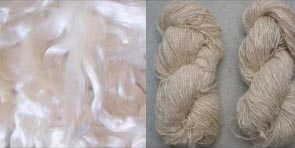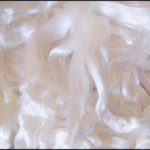


Today someone asked me about the fiber content of a silk fabric. They wanted to know if the silk was Mulberry or Tussah. While I’m always happy to answer whatever questions I can about textiles, I have to admit that I was a bit embarrassed by my lack of knowledge in this area. Not one to shrug my shoulders and quickly forget, I asked a few seasoned professionals as well as consulted the trusty old Google and learned a few things.
Tussuah Silk : Silk in its natural state; raw silk. Used for making Duppioni fabric.
Mulberry Silk: Silk spun by worms that have been cultivated and fed a strict diet of mulberry leaves.
Simple enough, right? I thought so. However, from what I hear, “mulberry” silk is not an actual term. It is simply silk that is not tussah silk. Now, remember, I already fessed up to not being too knowledgeable here. So now I’m confused. What’s the deal? Have you heard of mulberry silk? Ever used it in a sentence?

Joe DeLuca
Interesting!
According to Fairchild’s Dictionary of Textiles (which I have to happen to have open as I read through your wonderful blog), Mulberry Silk is indeed an actual term.
Mulberry Silk: Silk produced by the Bombyx mori silkworms that feed on the leaves of cultivated Mulberry trees. WILD SILK is obtained from worms that feed on the leaves of Oak, castor oil plants, as well as other trees and shrubs.
The entry for Tussah silk is interesting. It seems that it’s basically silk produced from undomesticated, Asian, silk worms, including the Tussah Silkworm.
Thanks for the blog! I love it.